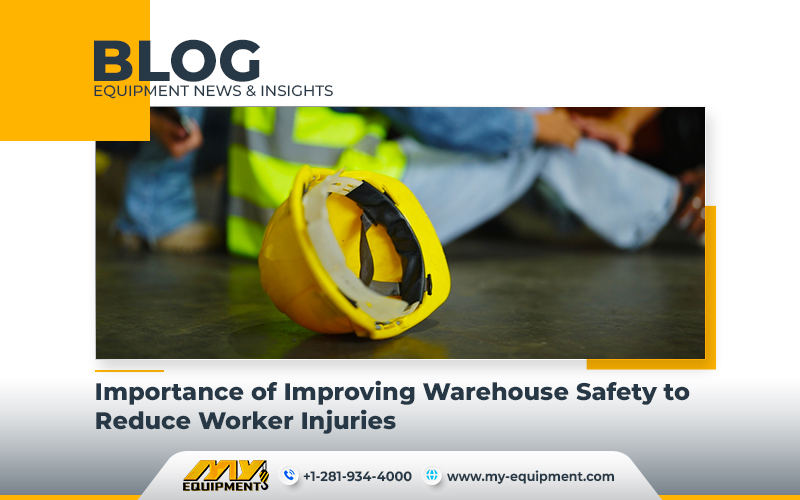The growth of e-commerce has led to a massive increase in the number of Americans that are now working in warehouses. However, this growth has also resulted in a rise in some work related injuries among warehouse employees. Today we will discuss the recent surge in injuries, OSHA’s response, and practical steps that warehouse owners can take to be more safe.
Rising Injury Rates in Warehouses
Explosive Growth
Over the past decade, the number of warehouse employees in the U.S. has nearly tripled due to e-commerce expansion.
Injury Statistics
Work related illnesses and injuries in the transportation and warehousing sector also increased by 22.3% in 2021. This of course became the second-highest rate of growth among all sectors.
Lost Workdays
Incidents that result in the employees missing at least one workday increased by 23% in 2021, affecting the private sector, a lot.
What was OSHA’s response?
Emphasis Program
OSHA announced a three-year nationwide program in July to address warehouse safety, focusing on prevention.
Safety Inspections
Comprehensive safety inspections cover topics like industrial equipment and vehicle use, material handling, evacuation procedures, and fire protection.
Health Inspections
OSHA will assess the risks that are associated with heat and ergonomics, potentially leading to health inspections.
Impact of Unsafe Warehouses
Financial Consequences
Unsafe facilities can actually lead to a lot of increased insurance costs, lawsuits, and fines from OSHA for regulatory violations.
Productivity Loss
Work accidents can lead to understaffing, reduced productivity, and diminished customer service quality.
Reputation
Neglecting employee safety can harm a company’s reputation, making it challenging to even attract top talent.
Practical Steps for Warehouse Safety
Forklift Safety
Provide training and certification to your forklift operators. Make sure to conduct regular evaluations and refresher training. Use impact-tested safety barriers to separate pathways. Implement camera systems and autonomous forklifts to prevent any accidents.
Dock Safety
Instruct your forklift drivers to drive carefully and gently on dock plates. Keep dock edges clear and use warning signs whenever the employees are near docks.
Handling Hazardous Substances
You should train your employees on proper handling and storage of dangerous materials. Provide personal protective equipment and training for its use.
Preventing Falling Objects
Use safety barriers to keep employees out of hazardous areas. Install fall-arrest systems like safety nets to prevent items from falling.
Conveyor Safety
Provide safety equipment to prevent entanglement. Follow correct lockout/tag-out procedures during maintenance.
Material Storage
Pile loads level and neatly to avoid accidents. Keep aisles and passages clear. Transfer one item at a time, storing heavier loads on lower shelves.
Manual Handling and Lifting
Provide ergonomics training to prevent injuries. Encourage safe lifting techniques and seek assistance for heavy objects.
Charging Port Safety
Prohibit smoking near the charging ports. Place charging ports away from the heat sources and open flames. Ensure the availability of fire extinguishers and eye-washing facilities for chemical exposure.
Resources for Warehouse Safety
To learn more about warehouse safety best practices, consult industry professionals such as OSHA, the National Safety Council, and MHI.


 1400 Broadfield Blvd, Houston, TX 77084,
USA.
1400 Broadfield Blvd, Houston, TX 77084,
USA.